Mass 10 kg hanging vertically on 5m long rope, if aforce of 30N is applied at the centre of the rope horizontally. What is the angle made by upper half of rope with the vertical in equilibrium.
To solve the problem, we need to analyze the forces acting on the mass hanging from the rope and the tension in the rope when a horizontal force is applied. Here’s a step-by-step solution:
Step 1: Identify the forces acting on the mass
The mass m=10kg hanging from the rope exerts a downward force due to gravity, which can be calculated as:
Fg=mg=10kg×9.81m/s2=98.1N
However, for simplicity, we can approximate this to 100N.
Step 2: Set up the equilibrium conditions
When the horizontal force F=30N is applied at the midpoint of the rope, the system reaches equilibrium. At this point, we can analyze the forces in both the vertical and horizontal directions.
1. Vertical Forces: The tension T in the upper half of the rope must balance the weight of the mass:
Tcosθ=100N(1)
2. Horizontal Forces: The horizontal component of the tension must balance the applied force:
Tsinθ=30N(2)
Step 3: Divide the equations
To eliminate T from the equations, we can divide equation (2) by equation (1):
TsinθTcosθ=30100
This simplifies to:
tanθ=30100=0.3
Step 4: Calculate the angle θ
To find the angle θ, we take the arctangent (inverse tangent) of 0.3:
θ=tan−1(0.3)
Using a calculator:
θ≈16.7∘
Final Answer
The angle made by the upper half of the rope with the vertical in equilibrium is approximately 16.7∘.
---
The mass m=10kg hanging from the rope exerts a downward force due to gravity, which can be calculated as:
Fg=mg=10kg×9.81m/s2=98.1N
However, for simplicity, we can approximate this to 100N.
When the horizontal force F=30N is applied at the midpoint of the rope, the system reaches equilibrium. At this point, we can analyze the forces in both the vertical and horizontal directions.
Tcosθ=100N(1)
Tsinθ=30N(2)
To eliminate T from the equations, we can divide equation (2) by equation (1):
TsinθTcosθ=30100
This simplifies to:
tanθ=30100=0.3
To find the angle θ, we take the arctangent (inverse tangent) of 0.3:
θ=tan−1(0.3)
θ≈16.7∘
The angle made by the upper half of the rope with the vertical in equilibrium is approximately 16.7∘.
Topper's Solved these Questions
Similar Questions
A mass of 6 kg is suspended by a rope of length 2 m from the ceilling A force of 50 N in the horizontal direction is applied at the mid - point P of the rope as shown . What is the angle the rope makes with the vertical in equilibrium ? (Take = 10ms−2) . Neglect mass of the rope .
View SolutionA mass of 20 kg is suspended by a rope of length 2 m from a ceiling. A force of 173.2 N in the horizontal direction is applied at the midpoint of the rope as shown in Fig. What is the angle the rope makes with the horizontal in equilibrium ? Take g = 10ms−2. Neglect mass of the rope.
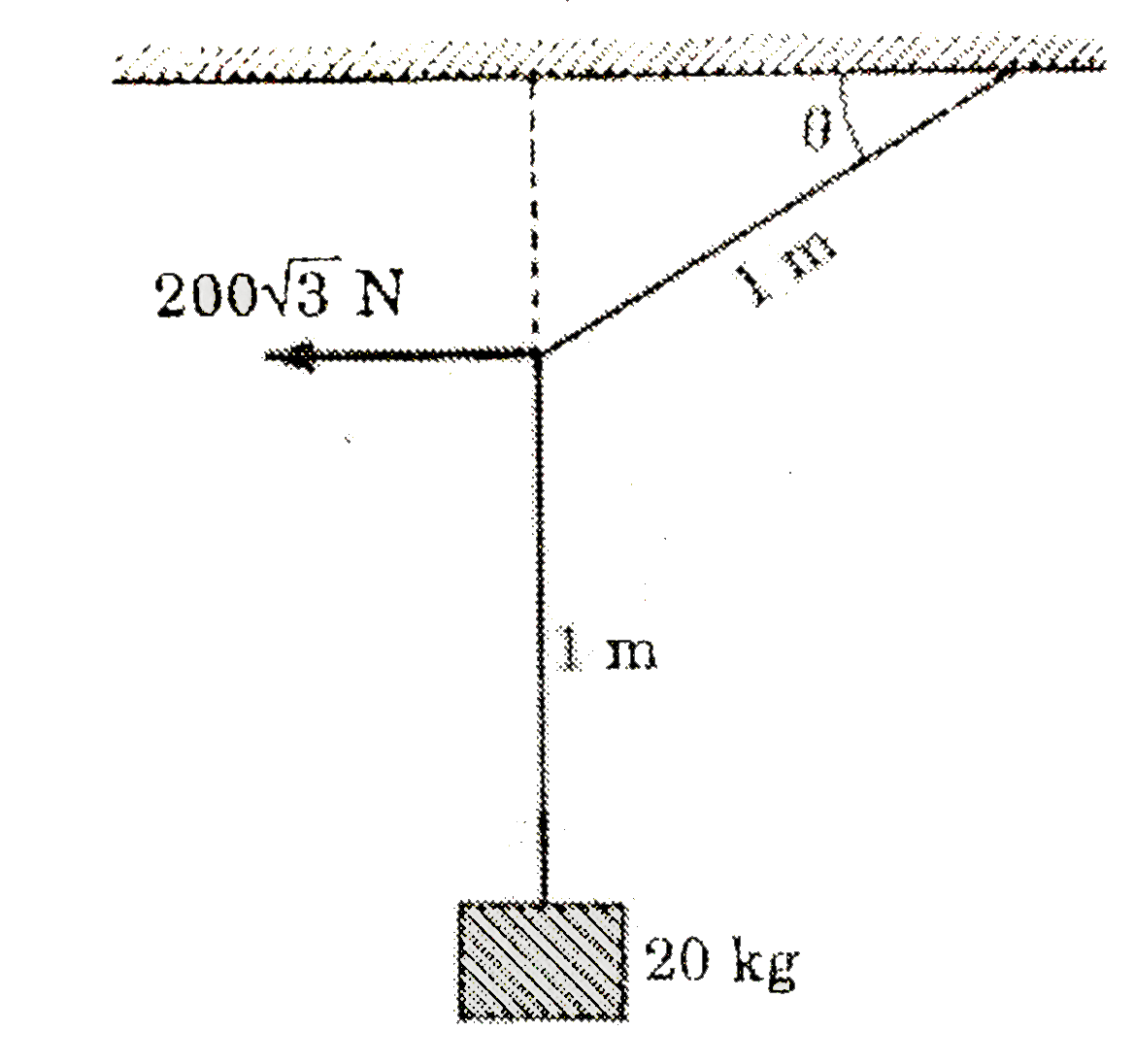
View Solution
Knowledge Check
A mass of 20 kg is suspended by a rope of length 4 m from the ceiling. A force of 60 N is applied at the midpoint of the rope in the horizontal direction. What is the angle made by the rope with the vertical in equilibrium? Assume that the mass of the rope is negligible and g=10m/s2
Aθ=tan−1(110)Bθ=tan−1(15)Cθ=tan−1(310)Dθ=tan−1(12)A block of mass 5kg is suspended by a massless rope of length 2 m from the ceiling. A force of 50 N is applied in the horizontal direction at the midpoint P of the rope, as shown in the figure. The angle made by the rope with the vertical in equilibrium is (Take g=10ms−2m .
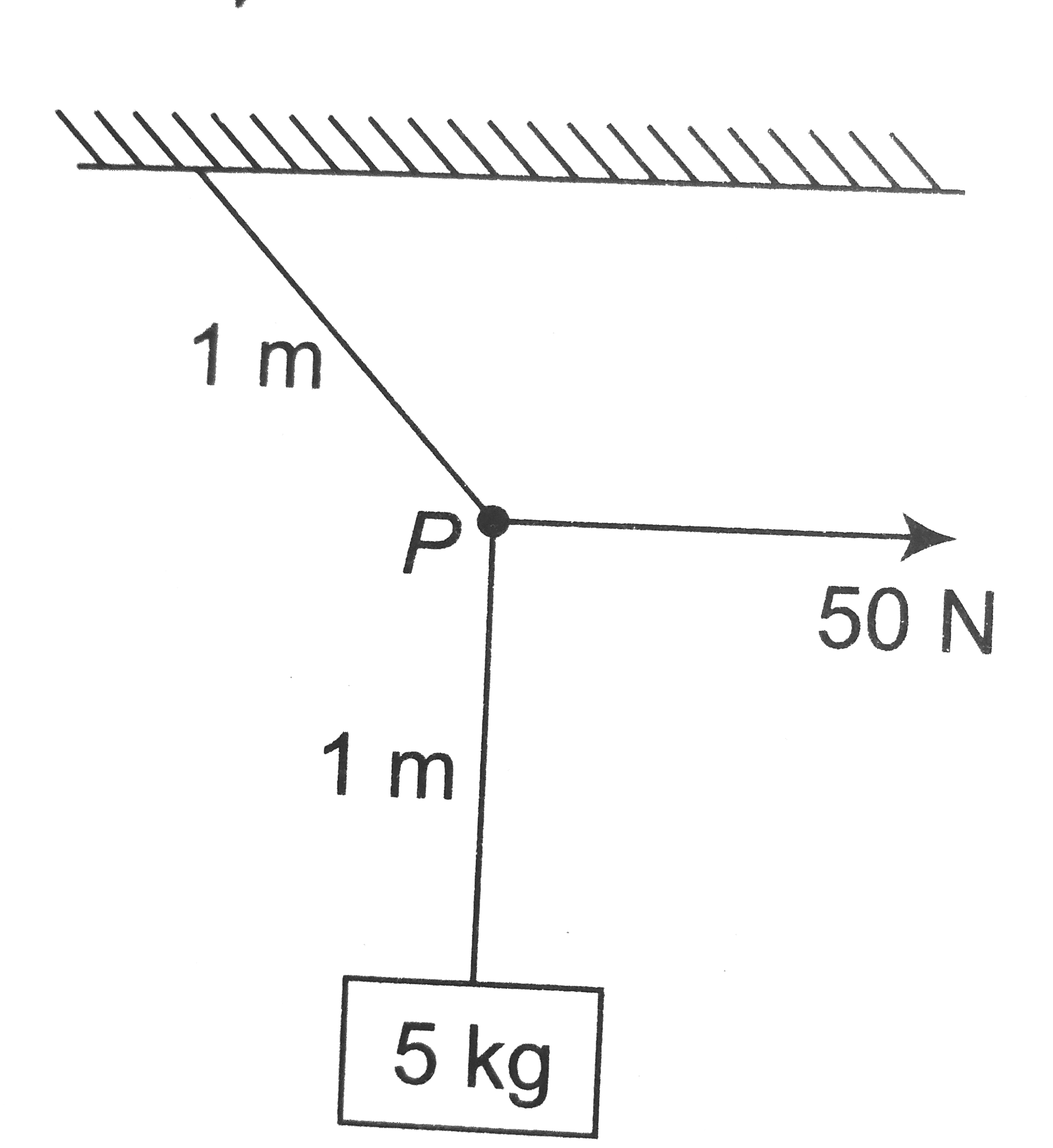 A30∘B40∘C60∘D45∘
A30∘B40∘C60∘D45∘A mass of 6 kg is suspended by a rope of length 2m from a celling. A force of 50N is applied in horizontal direction at the mid point of the rope. What is the angle of the rope with the verticle in equilibrium:-
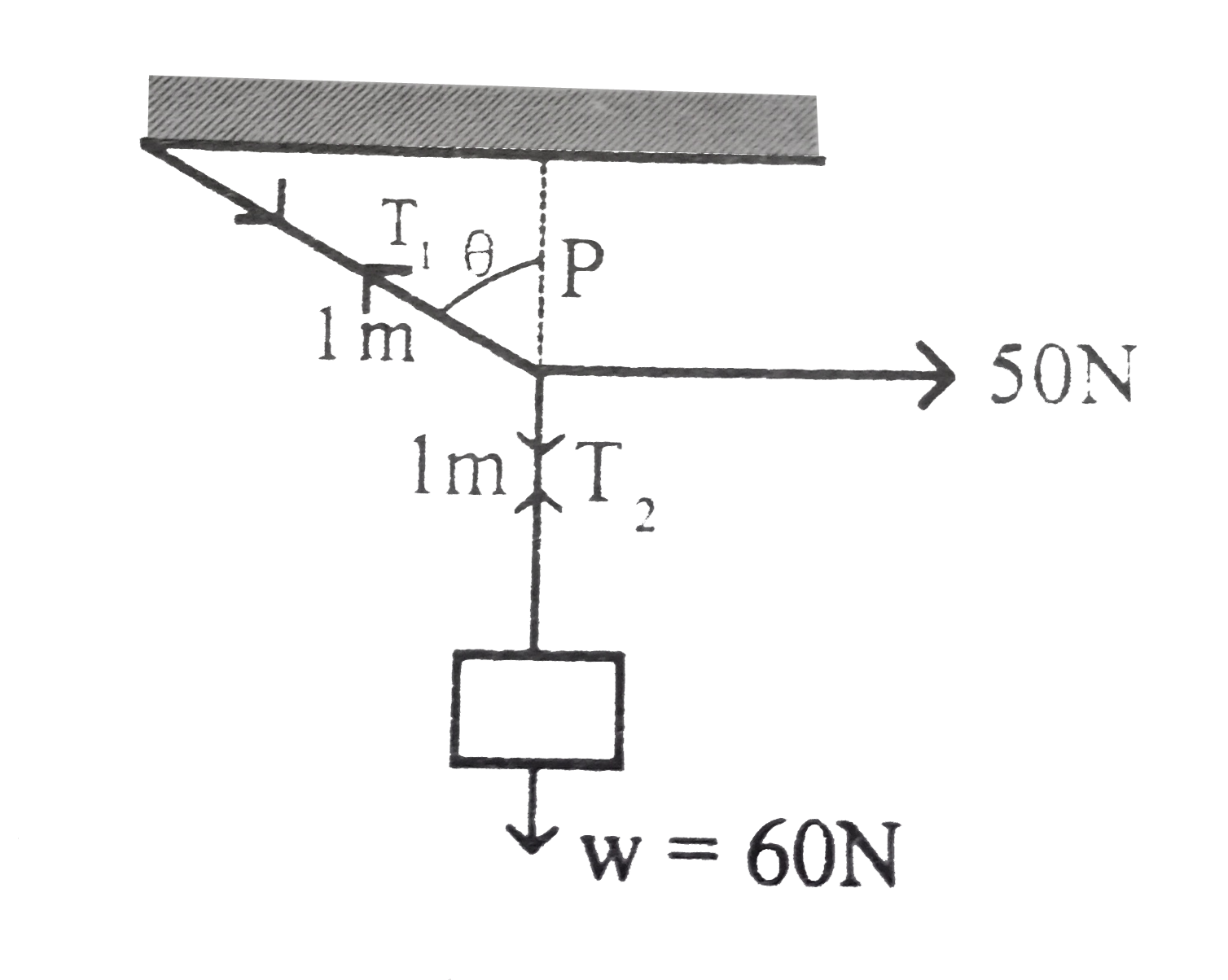 Atan−1(45)Btan−1(54)Ctan−1(56)DNone of these
Atan−1(45)Btan−1(54)Ctan−1(56)DNone of these
A mass of 3kg is suspended by a rope of length 2m from the ceilling A force of 40N in the horizontal direction is applied atmidpoint P of the rope the as shown. What is the angle the rope makes with the vertical in equilibrium and the tension in part of string attached to the ceiling ? (Neglect the mass of the rope, g=10m/s2) .
View SolutionA mass of 3kg is suspended by a rope of length 2m from the ceiling. A force of 40 N in the horizonal direction is applied at midpoint P of the rope as shown. What is the angle the rope makes with the vertical in equilibrium and the tension in part of string attached to the ceiling? (Neglect the mass of the rope, g=10m/s2)
View SolutionA mass of 10 kg is suspended by a rope of length 2.8m from a ceiling. A force of 98 N is applied at the midpoint of the rope as shown in figure. The angle which the rope makes with the vertical in equilibrium is

View SolutionA mass of 10kg is suspended by a rope of length 2.8m from a ceiling. A force of 98N is applied at the midpoint of the rope as shown in figure. The angle which the rope makes with the vertical in equilibrium is
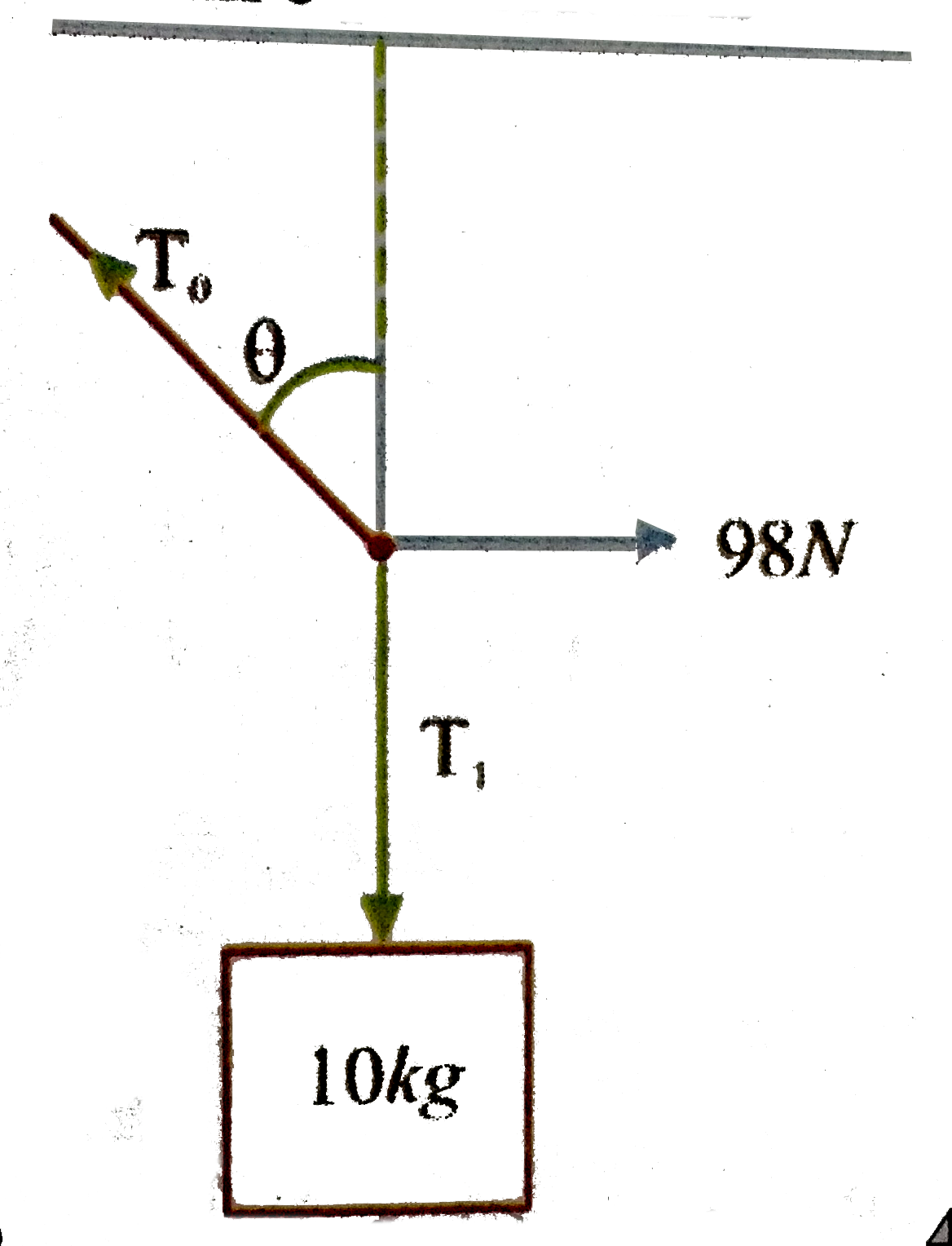 .
.
View SolutionA mass of 4kg is suspended by a rope of length 4m from a ceiling. A force of 20N in the horizontal direction is applied at the mid-point of the rope as shown in figure. What is the angle which the rope makes with the vertical in equilibrium? Neglect the mass of the rope. Take g=10ms−2 .
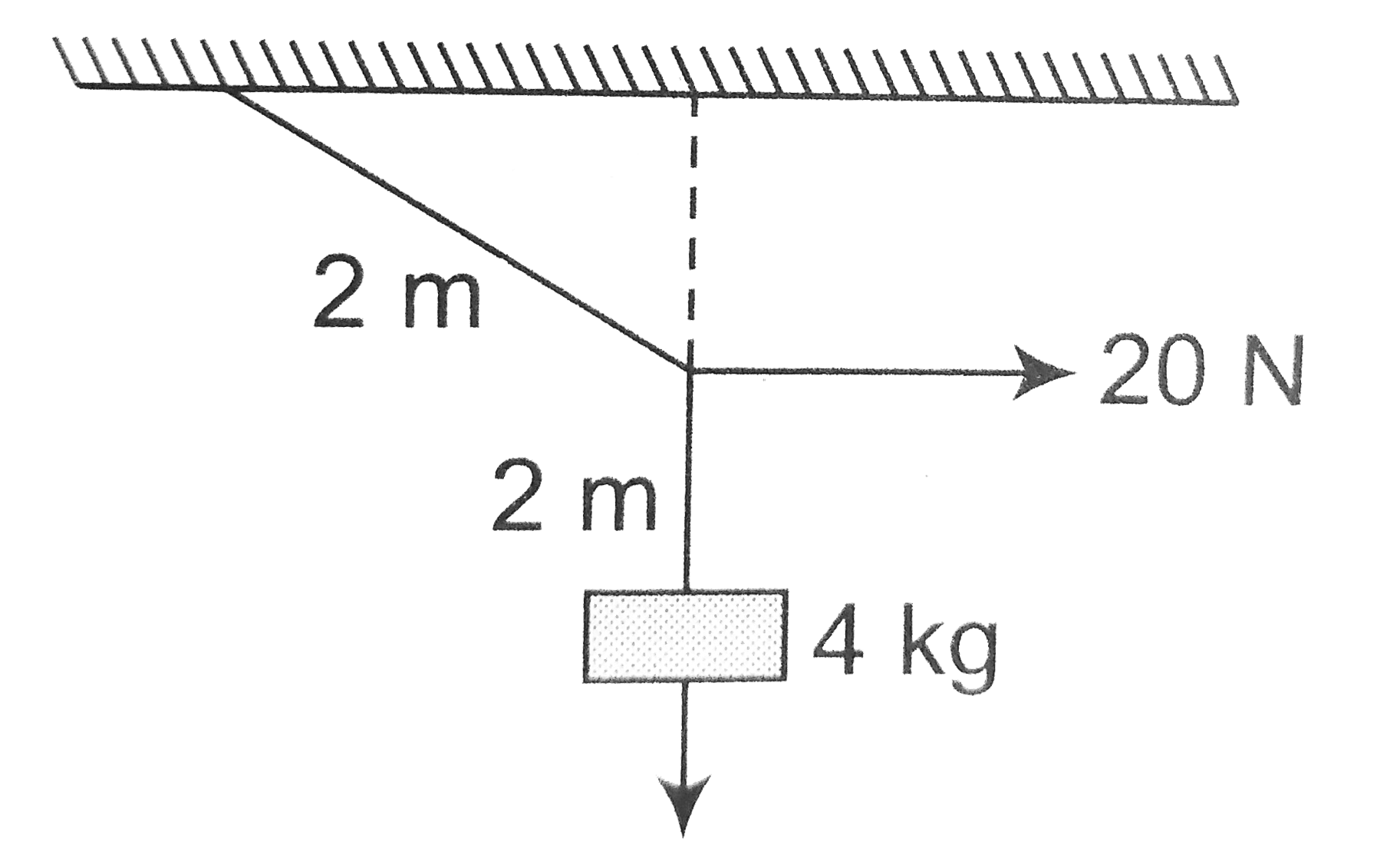
View Solution
